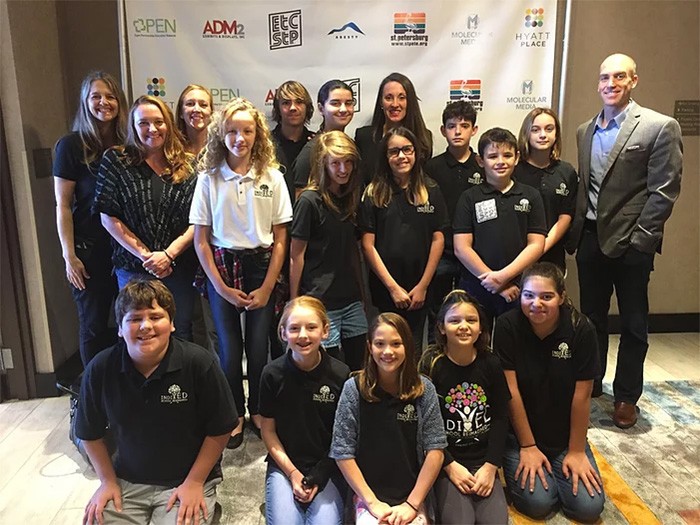Last week I was invited to speak and sit in on a discussion with a variety of people who have a vested interest in education at the Et Cultura Festival.
This week we are hosting new interested families and students and a woman from NJ who is interested in starting her own school and wants to learn from how we do things here.
After having the week to digest the event and dialogues that took place, the one thing that left the biggest impression on me was the title of the panel that I sat on, “The Future of School Design”.
On that panel sat two architects who have a wealth of experience designing spaces-schools included, a gentleman who has opened many forward thinking schools in NY, myself, and a woman from Pinellas County Schools in charge of strategic partnerships.
Also in the room(s) were parents, professionals, investors, teachers, politicians, college students, and of course Indi-ED students.

The mix helped engage a variety of ideas from many perspectives.
The discussion began with the organizers showing this video in an attempt to set the tone as to what “could” be from the World Economic Forum, Finland designing the “perfect school”. (*I say “could” because Indi-ED is already doing most of these.)
While the gestures and kind comments that happened during and after the discussion left me re-energized, what I realized that is missing for many is a lack of understanding, vision, and execution.
A lack of honest understanding of what’s happening currently in schools leads to blame.
A lack of vision as to what is necessary for the future of schools, the bigger picture, which leads frustration.
And a lack of execution to initiate change which leads to repeating more of the same.
After the video, the first question we were asked to address on the panel was, “What is the core characteristic of the “perfect school?’
I won’t walk you through all of the details as hopefully they’ll be a video in the near future, but I believe my intended response to this question specifically sets the tone as to how Indi-ED has the understanding, vision, and execution that allows us to be doing almost all of the things that were highlighted in the video.
In my opinion, I don’t personally believe in perfection. Because that insinuates that you can’t ever get better. That there’s no room for growth or improvement. For me, for us at Indi-ED, we focus on a constant state of progress – in all things. In their academics. In their communication. In their physical and mental strength. In the development of the entire child.
Often in education we hear about a “perfect score” or a “perfect student” which are all inaccurate misconceptions. Based on what? Everyone is different. If we really are to support that idea, we should be focusing on FLEXIBILITY, UNDERSTANDING, AND SUPPORT.
Meetings kids, teachers, families where they’re at. Learning about them. Truly connecting with them. Understanding their vision and desires for their own child or their own self. While working together to consistently make progress from there. No judgement, no ego, just effort and progress.
When that is truly embraced by an entire school and community culture, you’d be amazed at how quickly the “challenges” seem to fall away. Motivation increases, fear of failure is eliminated, student-focused, long term progress is the goal.
In education, some of us learn the theory in curriculum design called backwards design. Which in layman’s terms means to think about what you want your students to know, understand, or do and then to design your lessons in reverse in order to get them there.
This is exactly the same process I took myself through while designing Indi-ED and has gotten us this far. I literally broke down all of the components that weren’t working in our schools and redesigned them with the future that our students would face in mind.
So if you’re someone who’s interested in starting their own school, or is looking to help your community’s current environment this could be a good activity for you to embrace-start thinking backwards. What needs to change?
The physical design of our schools are outdated and do not lend themselves to how our children learn. So how should they be designed?
Our areas’ methods of educating children are outdated. Legislation and leadership need to change in order to even begin making any meaningful change. So what do we need to do in order to initiate small changes?
But the real focus for true future of school design should be, what will our kids need for their futures? Then allowing people the time and space to focus on getting our kids “there” should be the focus. Then THAT should drive the motivation in all of our actions. It does here.
So while the panel and conversations need to be had, we’re most happy with the fact that because we’ve already started implementing what will be the future of education, that we can help to continue contributing to the action surrounding improving education for kids in our area and beyond.


